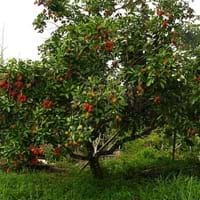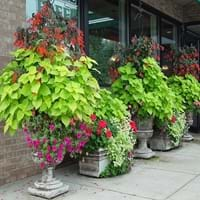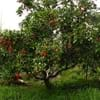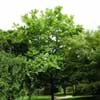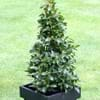Life Span
Perennial
Annual and Perennial
Type
Tree
Bulb or Corm or Tuber
Origin
Southeastern Asia, China
Central America, South America
Types
Brewster, Mauritius, Hak ip
Vine, Flowering plant
Number of Varieties
Not Available
Habitat
Subtropical climates, Tropical regions, Warmer regions
All sorts of environments, Along Railroads, Banks, Moist Ditches, Roadsides, rocky banks of streams
USDA Hardiness Zone
10-11
10-13
Sunset Zone
H1, H2, 21, 22, 23, 24
21,22
Habit
Oval or Rounded
Vining/Climbing
Minimum Width
Not Available
Flower Color
Light Yellow, Yellow green
Purple, Rose
Flower Color Modifier
Bicolor
Bicolor
Fruit Color
Red, Magenta
Not Available
Leaf Color in Spring
Red, Dark Green, Copper
Purple, Dark Green, Black
Leaf Color in Summer
Dark Green
Light Green
Leaf Color in Fall
Dark Green
Several shades of Green
Leaf Color in Winter
Dark Green
Light Green
Leaf Shape
Long Linear
Acicular
Plant Season
Spring, Summer, Fall, Winter
Spring, Summer, Fall, Winter
Sunlight
Full Sun, Partial Sun
Full Sun, Partial Sun
Growth Rate
Slow
Very Fast
Type of Soil
Loam, Sand
Clay, Loam, Sand
The pH of Soil
Acidic, Neutral
Acidic, Neutral, Alkaline
Soil Drainage
Well drained
Well drained
Bloom Time
Early Spring
Late Spring, Early Summer, Summer, Late Summer, Early Fall, Fall, Late Fall
Tolerances
Not Available
Drought
Where to Plant?
Ground
Container, Ground
How to Plant?
Seedlings, Stem Planting, Transplanting
Cuttings, Leaf Cutting, Tuber propagation
Plant Maintenance
High
Medium
Watering Requirements
Requires regular watering
Keep the Soil well drained, Needs very little water
In Summer
Lots of watering
Lots of watering
In Spring
Twice a week
Moderate
In Winter
Regular watering required
Average Water
Soil pH
Acidic, Neutral
Acidic, Neutral, Alkaline
Soil Type
Loam, Sand
Clay, Loam, Sand
Soil Drainage Capacity
Well drained
Well drained
Sun Exposure
Full Sun, Partial Sun
Full Sun, Partial Sun
Pruning
Prune after harvesting, Prune lower leaves, Prune to control growth
Remove damaged leaves, Remove dead branches, Remove dead leaves
Fertilizers
All-Purpose Liquid Fertilizer, Fertilize after blooming period
All-Purpose Liquid Fertilizer
Pests and Diseases
Aphids, fungus, Leaf curl
Red blotch
Plant Tolerance
Not Available
Drought
Flowers
Insignificant
Showy
Flower Petal Number
Single
Single
Foliage Texture
Medium
Coarse
Foliage Sheen
Glossy
Matte
Attracts
Not Available
Aphids, Beetles, Cutworms, Insects, Mites, Whiteflies
Allergy
Itchiness
Abdominal pain, allergic reaction, Nausea, Skin rash, Twitching of face
Aesthetic Uses
Showy Purposes
Not Used For Aesthetic Purpose
Beauty Benefits
Not Available
Not Available
Environmental Uses
Not Available
Air purification
Medicinal Uses
anti-allergy, Bone strength, Digestive disorders, Heart problems
Cures constipation, Fiber, Low calories, lowering blood pressure, Potassium, ß-carotene, Vitamin A, Vitamin C
Part of Plant Used
Fruits
Leaves, Root, Shoots, Stem, Tuber
Other Uses
Used As Food, Used as Ornamental plant
Starch, Used As Food, Used as Ornamental plant
Used As Indoor Plant
No
Sometimes
Used As Outdoor Plant
Yes
Yes
Garden Design
Edible, Feature Plant, Foundation, Fruit / Fruit Tree, Hedges, Shade Trees, Topiary / Bonsai / Espalier, Tropical
Container, Edible, Groundcover, Hanging Basket, Herb / Vegetable, Mixed Border, Rock Garden / Wall, Vine
Botanical Name
LITCHI chinensis
IPOMOEA batatas 'Blackie'
Common Name
Litchee, Litchi, Lychee
Blackie Sweet Potato Vine, Sweet Potato Vine
In German
Lychee
Süßkartoffel
In French
Lychee
Patate douce
In Spanish
Lychee
Ipomoea batatas
In Greek
λίτσι
Sweet potato
In Portuguese
lichia
Batata-doce
In Polish
Lychee
Wilec ziemniaczany
In Latin
Lychee
Ipomoea batatas
Phylum
Tracheophyta
Tracheophyta
Class
Magnoliopsida
Magnoliopsida
Order
Sapindales
Solanales
Family
Sapindaceae
Convolvulaceae
Genus
Litchi Sonn
Ipomoea
Clade
Angiosperms, Eudicots, Rosids
Angiosperms, Asterids, Eudicots
Tribe
Not Available
Not Available
Subfamily
Sapindoideae
Not Available
Number of Species
Not Available
Season and Care of Lychee and Sweet Potato Vine
Season and care of Lychee and Sweet Potato Vine is important to know. While considering everything about Lychee and Sweet Potato Vine Care, growing season is an essential factor. Lychee season is Spring, Summer, Fall and Winter and Sweet Potato Vine season is Spring, Summer, Fall and Winter. The type of soil for Lychee is Loam, Sand and for Sweet Potato Vine is Clay, Loam, Sand while the PH of soil for Lychee is Acidic, Neutral and for Sweet Potato Vine is Acidic, Neutral, Alkaline.
Lychee and Sweet Potato Vine Physical Information
Lychee and Sweet Potato Vine physical information is very important for comparison. Lychee height is 910.00 cm and width 1,070.00 cm whereas Sweet Potato Vine height is 15.00 cm and width Not Available. The color specification of Lychee and Sweet Potato Vine are as follows:
Lychee flower color: Light Yellow and Yellow green
Lychee leaf color: Red, Dark Green and Copper
Sweet Potato Vine flower color: Purple and Rose
- Sweet Potato Vine leaf color: Purple, Dark Green and Black
Care of Lychee and Sweet Potato Vine
Care of Lychee and Sweet Potato Vine include pruning, fertilizers, watering etc. Lychee pruning is done Prune after harvesting, Prune lower leaves and Prune to control growth and Sweet Potato Vine pruning is done Remove damaged leaves, Remove dead branches and Remove dead leaves. In summer Lychee needs Lots of watering and in winter, it needs Regular watering required. Whereas, in summer Sweet Potato Vine needs Lots of watering and in winter, it needs Average Water.
